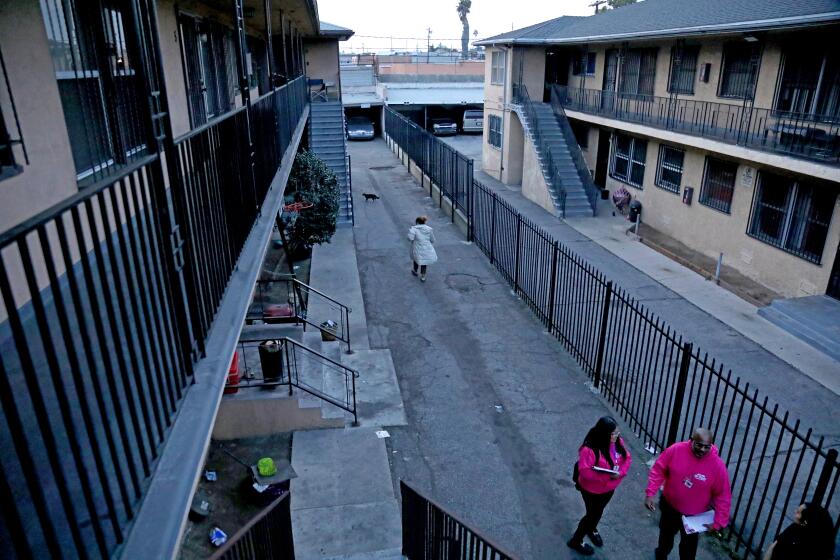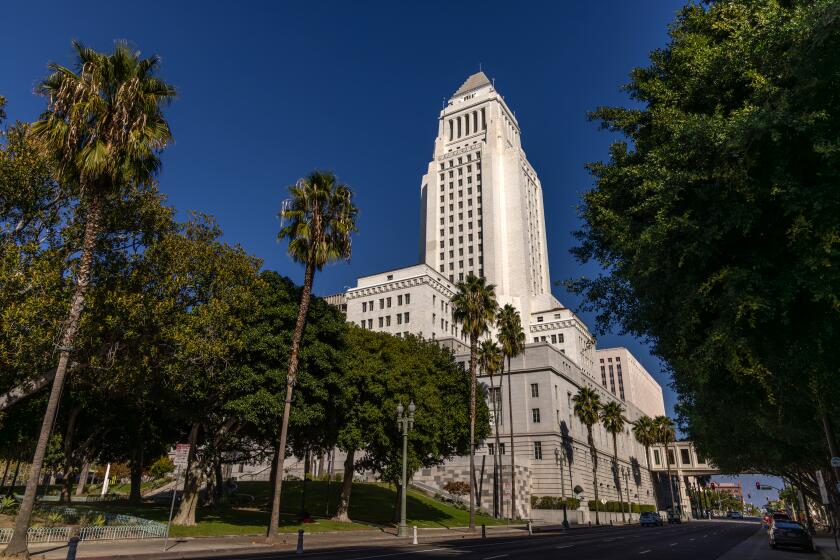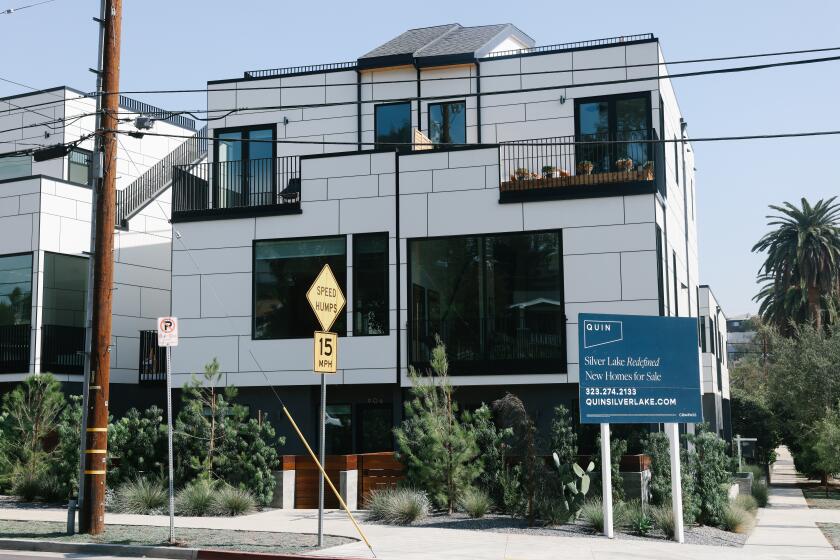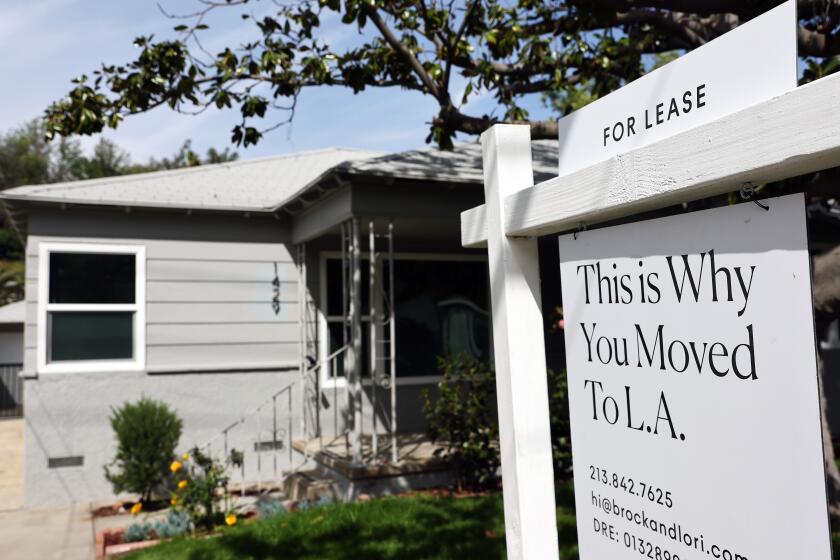California extends relief for homeowners who missed mortgage or tax payments
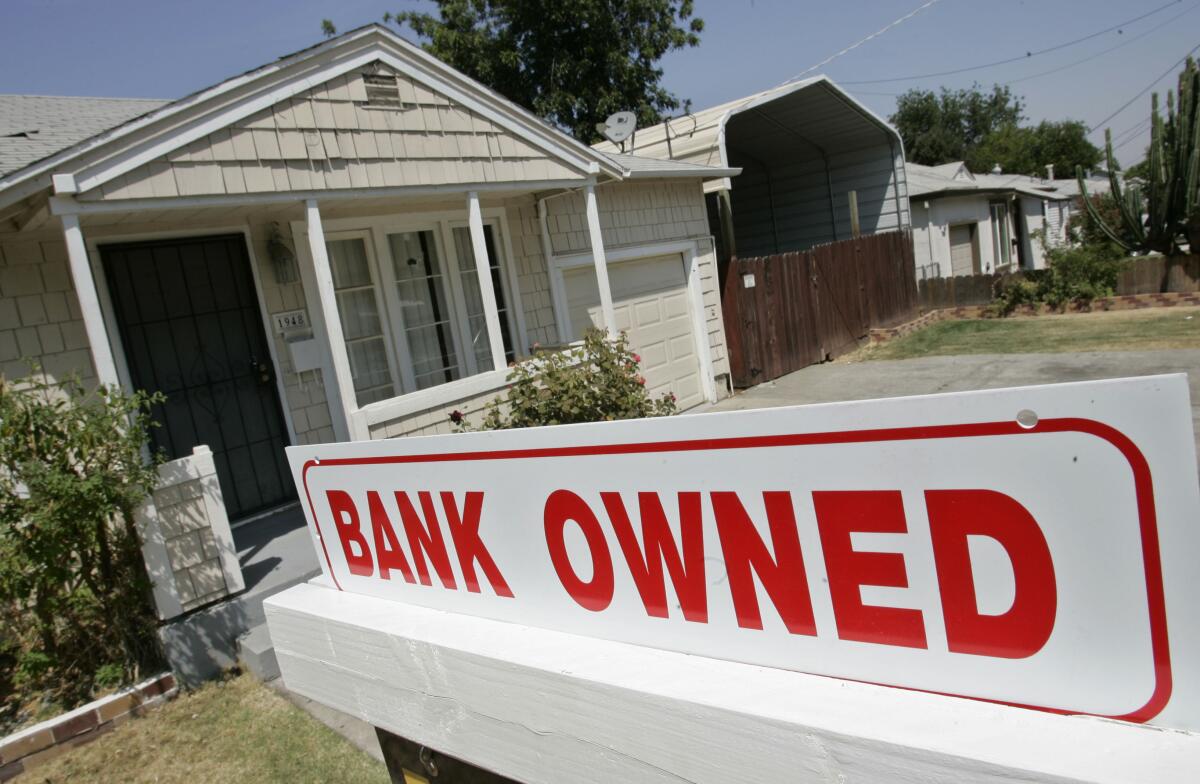
- Share via
Sometimes, the state just can’t give it away.
As part of the American Rescue Plan Act of 2021, the federal government awarded California $1 billion to help homeowners who fell behind on their mortgage payments during the pandemic. The state has used the money to offer up to $80,000 to low- and moderate-income homeowners with mortgage debt, overdue property taxes and deferred monthly payments.
These are not loans that must be repaid. Instead, they’re payments the state makes on the borrowers’ behalf to clear their mortgage or property-tax debt.
The thing is, homeowners haven’t exactly beaten down the state’s doors for the free help — not because they don’t need it, but because they may not know about it or know how to get it. So the California Mortgage Relief program has repeatedly extended the aid to more homeowners, and is now offering help to borrowers whose troubles began long after the COVID-19 restrictions were lifted.
In the latest extension, assistance is available to qualified homeowners who’ve missed at least two mortgage payments by Feb. 1 and are still in arrears, or who’ve missed at least one property tax payment by Feb. 1. Various restrictions apply, but the main ones are that aid is available only for owner-occupied homes and that an applicant’s total household income must be no more than 150% of the area median income. In Los Angeles County, that’s $132,450 for an individual and $189,150 for a family of four.
State officials have said the program will keep operating until all $1 billion has been awarded. According to the program’s data dashboard, a little less than a quarter of the money remains. Nearly 30,700 households statewide have seen their debts reduced by an average of $25,000.
James An, president of the Korean American Federation of Los Angeles, said the lingering effects of the pandemic are still causing problems for homeowners, especially elderly ones. Many of them had modest businesses that didn’t survive the pandemic, or they got sick, or their marriages crumbled under the stress, An said.
“A lot of horrible things happened during the pandemic that were either directly or indirectly related to COVID,” he said. “It caused long-lasting damage that a lot of people are never going to recover from.”
An said his organization has helped more than 400 people, many of whom didn’t have the tech savvy required to participate in the program. Elderly homeowners in particular can have trouble finding, scanning and submitting online the documents required to qualify for aid, he said.
The Korean American Federation continues to help applicants across Southern California on a voluntary basis, An said. The mortgage relief program’s website also offers support via phone and email, or through referrals to federally certified housing counselors.
Here are more details on who’s eligible, how to apply and what’s covered.
Tenants should be aware of their rights and the local resources they can turn to now that many of the renter protections have expired.
Who qualifies for relief?
Under federal law, households earning up to 150% of the median income in their county who suffered a pandemic-related financial hardship are eligible for up to $80,000 in relief. The limit rises as the number of people in your household increases; to find the limit for your household, consult the calculator on the program’s website.
The program defines a financial hardship as either reduced income or increased living expenses stemming from the COVID-19 pandemic. According to its website, qualifying expenses include “medical expenses, more people living in the household or costs for utility services.”
There are a few more limitations, however:
- The home in question must be your principal residence.
- You may own only one property, although it may have up to four units on it.
- If you’ve already paid off your mortgage or tax debt, you can’t recoup that money by applying for state aid.
- You will not qualify if your mortgage is a “jumbo” loan bigger than the limits set by Fannie Mae and Freddie Mac.
- You can’t obtain the state’s help if you have more than enough cash and assets (other than retirement savings) to cover your mortgage or tax debt yourself.
- Your mortgage servicer must be participating in the program.
The L.A. City Council adopted an ordinance that protects tenants awaiting emergency rental aid from being evicted while the funds are processed.
What kinds of help are available?
The program isn’t limited to helping people with mortgage and property tax debt. Funds also can be used for:
A second shot of relief. The mortgage relief program was originally seen as one-time-only assistance. Now, however, California homeowners who’ve already received help can apply for more if they have missed more payments and remain eligible. No household may collect more than $80,000 over the course of the program.
Reverse mortgages. Homeowners with reverse mortgages can apply for help with missed property tax or home insurance payments.
Partial claim second mortgages and deferrals. This applies to certain borrowers who fell behind on loans backed by the Federal Housing Administration, the U.S. Department of Agriculture or the Department of Veterans Affairs. Rather than demanding larger payments to cover the past-due amount, the agencies encouraged lenders to split off the past-due portion into a second, interest-free mortgage called a partial claim. That way, a borrower could stay current by paying just their usual monthly payment.
The partial claim second mortgage could be ignored until the house was sold, the mortgage was refinanced or the first mortgage was paid off, at which point the partial claim would have to be paid in full. In the meantime, it’s a real debt that affects the borrower’s ability to obtain credit.
Similarly, some lenders offered deferrals that bundled the missed payments into a sum that was tacked on to the end of the loan. Borrowers wouldn’t face higher monthly payments, but they would have to pay off the deferred amount (a “balloon payment”) when they refinanced, sold their house or reached the end of their loan.
The mortgage relief program offers up to $80,000 to pay all or part of a COVID-related partial claim or deferral received during or after January 2020.
Mortgage interest rates have fallen more than a percentage point since October. The drop relieves prospective buyers, but experts say rates are likely to stay high.
How do you apply?
Applications are available only online at camortgagerelief.org. For help filling one out, you can call the program’s contact center at (888) 840-2594, where assistance is available in English and Spanish.
If you don’t have access to the internet or a computer, you can ask a housing counselor to assist you. For help finding a counselor certified by the federal Department of Housing and Urban Development, call (800) 569-4287. You may also get help from the company servicing your mortgage.
The online application process starts with questions to determine your eligibility. If you meet the state’s criteria, you can then complete an application for funds. Here’s where you will need some paperwork to establish how much you earn and how much you owe.
According to the program’s website, among the documents you will need to provide are a mortgage statement, bank statements, utility bills and records that show the income earned by every adult in your household, such as pay stubs, tax returns or a statement of unemployment benefits. If you don’t have access to a digital scanner, you can take pictures of your documents with your phone and upload the images.
You’ll also need to provide a California ID or a Social Security number.
The site provides links to the application in English, Spanish, Chinese, Korean, Vietnamese and Tagalog.
Cities in the Los Angeles area are seeing lower rents as Orange County prices hold firm or even increase. Experts are calling for more tenant protections.
Who has received aid?
According to statistics kept by the program, about two-thirds of the money has gone to households at or below the area median income. In fact, half of the funding has gone to families whose incomes are no more than 30% of the area median, which in L.A. County would be about $26,500 for a single person or $37,830 for a family of four.
About 52% of the aid has gone to Latino and Black Californians, who together make up about 29% of the state’s homeowners.
The money will be awarded on a first-come, first-served basis, with two important caveats: According to the California Housing Finance Agency, 60% of the aid must go to households making no more than the area median income, and 40% must go to “socially disadvantaged homeowners.” Those are residents of the neighborhoods most at risk of foreclosure, based on the Owner Vulnerability Index developed by UCLA’s Center for Neighborhood Knowledge.
More to Read
Sign up for Essential California
The most important California stories and recommendations in your inbox every morning.
You may occasionally receive promotional content from the Los Angeles Times.
